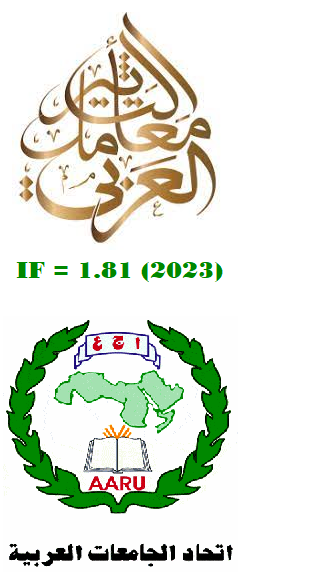Building an Efficient Model by Using Panel Data
Abstract
The panel data models have gained great attention because they consider the effect of changing time series and the cross-sectional units. It has a higher number of degrees of freedom and is, therefore, more efficient. Our research aims to build the most efficient model using panel data through comparison among six statistical models and to determine the most efficient model through the mean squares of error (RMSE) and the coefficient of determination (R2). Using the EViews-12 package to apply to two data sets to determine the most efficient model. The more critical findings are that the hypothesis assumed by the research states that the accuracy of the adopted models varies. Furthermore, it was found by building six types of panel data models that the best model is the (Two-way Fixed Effect Model) because it achieves the lowest value of (RMSE) and the largest value of R2.
Downloads
References
Al-Iriani, M.A. (2006). Energy-GDP relationship revisited: An example from GCC countries using panel causality. Energy Policy, 34(17), 3342-3350.
Allaoui, Z., & Chkir, A. (2006). Mondialisation, Convergence et Croissance Économique: Une Analyse par les Données de Panel. MPRA Paper 7306. Germany: University Library of Munich.
Altaee, H.H.A., Saied, S.M., Esmaeel, E.S., & Adam, M.H.M. (2014). Financial development, trade openness and economic growth: Evidence from sultanate of Oman (1972-2012). Journal of Economics and Sustainable Development, 5(23), 64.
Alyasari, H.H.A., & Alzawbaee, O.M.M. (2020). Panel data evidence on the relationship between economic growth, electricity consumption and CO2 emissions in the GCC. The Scientific Journal of Cihan University-Slemani, 33, 47.
Artelaris, P., Arvanitidis, P., & Petrakos, G. (2006). Theoretical and Methodological Study on Dynamic Growth Regions and Factors Explaining their Growth Performance (No. DYNREG02). Economic and Social Research Institute (ESRI).
Baltagi, B.H., & Baltagi, B.H. (2008). Econometric Analysis of Panel Data. Vol. 4. Berlin: Springer.
Beddies, M.C.H. (1999). Investment, Capital Accumulation, and Growth: Some Evidence from the Gambia 1964–98. United States: International Monetary Fund.
Begg, D., Vernasca, G., Fischer, S., & Dornbusch, R. (2014). EBOOK: Economics: United States: McGraw Hill.
Breihi, F.K, & Abid, A.N. (2017). Measure the Relative Efficiency of the Faculties of the University of Anbar Using the Style Envelope data, Economics and Administration Studies Journal (EASJ) (formerly AL-DANANEER JOURNAL), 1(11), 1-41.
Breusch, T.S., & Pagan, A.R. (1980). The Lagrange multiplier test and its applications to model specification in econometrics. The Review of Economic Studies, 47(1), 239-253.
Bruno, M., & Easterly, W. (1998). Inflation crises and long-run growth. Journal of Monetary Economics, 41(1), 3-26.
Dielman, T.E. (1989). Pooled cross-sectional and time series data analysis: Dekker.
Ghura, M.D. (1997). Private Investment and Endogenous Growth: Evidence from Cameroon: United States: International Monetary Fund.
Greene, W.H. (2003). Econometric Analysis Pearson Education India. Delhi, India: Pearson Education India.
Khamfula, Y. (2007). Foreign direct investment and economic growth in EP and IS countries: The role of corruption. World Economy, 30(12), 1843-1854.
Lee, C.H., & Huang, B.N. (2002). The relationship between exports and economic growth in East Asian countries: A multivariate threshold autoregressive approach. Journal of Economic Development, 27(2), 45-68.
Mohammed, P.A., Obed, S.A., Ali, I.M., & Kadir, D.H. (2022). US Dollar/IQ Dinar currency exchange rates time series forecasting using ARIMA model. Cihan University-Erbil Scientific Journal, 6(1), 12-19.
Whang, Y.J. (2019). Econometric Analysis of Stochastic Dominance: Concepts, Methods, Tools, and Applications: Cambridge: Cambridge University Press.
Wooldridge, J.M. (2010). Econometric Analysis of Cross Section and Panel Data: Cambridge: MIT press.
Yaffee, R. (2003). A Primer for Panel Data Analysis. New York: Connect-Information Technology at New York University.
Copyright (c) 2023 Nozad H. Mahmood, Obaid M. Al-Zawbaee

This work is licensed under a Creative Commons Attribution-NonCommercial-NoDerivatives 4.0 International License.
Authors who publish with this journal agree to the following terms:
1. Authors retain copyright and grant the journal right of first publication with the work simultaneously licensed under a Creative Commons Attribution License [CC BY-NC-ND 4.0] that allows others to share the work with an acknowledgment of the work's authorship and initial publication in this journal.
2. Authors are able to enter into separate, additional contractual arrangements for the non-exclusive distribution of the journal's published version of the work (e.g., post it to an institutional repository or publish it in a book), with an acknowledgment of its initial publication in this journal.
3. Authors are permitted and encouraged to post their work online (e.g., in institutional repositories or on their website) prior to and during the submission process, as it can lead to productive exchanges, as well as earlier and greater citation of published work (See The Effect of Open Access).









